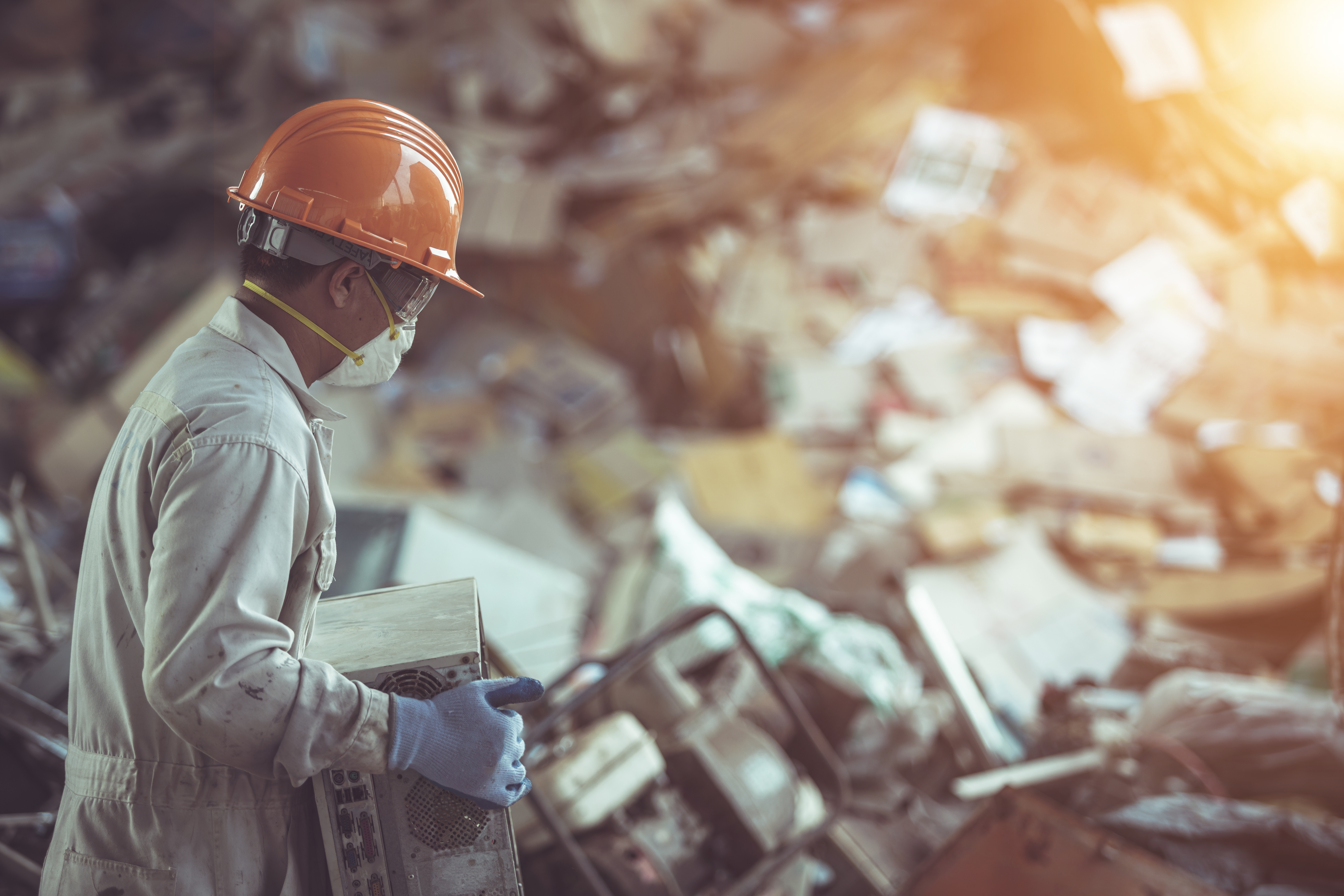A Holistic Approach to the Circular Economy – More than Cost Saving, It is Life Saving
By Andrew Kroeger, Securaze
As organizations transform to meet the needs of today’s digital-first economy, every company is becoming a technology company. This shift is driving significant increases in IT spend at the macro level. Gartner forecasts global IT spend to increase 8.6 percent in 2021, putting worldwide IT spend at $4.2 trillion this year. This is a substantial number and with that, comes substantial responsibility.1
Traditional consumption models have wreaked havoc on our world – and not just in terms of raw materials and pollution, but also on the people used to source these materials, often children from impoverished countries who are forced into labor. So as companies think of ways to optimize IT spend, a more holistic approach should be considered.
Technology leaders like Apple, Samsung, Microsoft, LG and others are going beyond SDG, CSR, and ESG to make pledges that support Supply Chain Transparency, accurately identifying and collecting data from all links in their supply chains. It is a progressive approach ensuring the integrity of how materials are sourced and used in manufacturing. Furthermore, this information is communicated both internally and externally to positively affect change.
MOUNTING E-WASTE, A DANGER TO WOMEN AND CHILDREN'S HEALTH
A rapidly escalating problem, e-waste volumes are surging globally. According to the Global E-waste Statistics Partnership (GESP), they grew by 21% in the five years up to 2019, when 53.6 million metric tons of e-waste were generated. For perspective, last year’s e-waste weighed as much as 350 cruise ships placed end to end to form a line almost 78 miles long. This growth is projected to continue as the use of computers, mobile phones and other electronics continues to expand, alongside their rapid obsolescence.2
According to a June 15, 2021 report from the World Health Organization (WHO), only 17.4% of e-waste produced in 2019 reached formal management or recycling facilities while, according to the most recent GESP estimates, the rest was illegally dumped, overwhelmingly in low- or middle-income countries, where it is recycled by informal workers, mainly women and children. According to the WHO report, more than 18 million children, some as young as 5 years of age, work in the informal industrial sector of which waste processing is a sub-sector. Instead of going to school, they spend their days pulling apart the electronic devices by hand to recover valuable materials like copper or gold, often burning the remaining materials. Both processes lead to overwhelmingly high exposure to harmful toxins such as mercury, lead, cadmium, arsenic, and flame retardants.3
The implications are tragic. In children, e-waste toxin exposure has been linked to adverse respiratory effects, changes in lung function, DNA damage, impaired thyroid function, and an increased risk of chronic diseases later in life including cancer and cardiovascular disease. In expecting mothers, toxic e-waste affects not only her health, but that of her unborn child. Often, it impacts that child in lifelong ways including behavioral problems, changes in child temperament, sensory integration difficulties, and reduced cognitive and language scores.

A CALL TO ACTION - GOVERNMENT AND INDUSTRY WORKING TOGETHER
With the growing threat of e-waste putting the environment and the lives and health of so many children, adolescents, and mothers at risk, calls for effective and binding action by exporters, importers and governments for appropriate collection and recycling of e-waste is key.
Thanks to research and education from humanitarian organizations like the WHO, World Economic Forum and the UN Environment Program, many governments around the world have recognized this growing crisis and launched initiatives to end the harmful practices. In the recent GESP report, the 17.4% of e-waste that was collected and appropriately recycled prevented as much as 15 million tons of carbon dioxide equivalents from being released into the environment.4 Facilitating better reuse of materials and encouraging the manufacture of more durable electronic equipment does make an impact. Valuable incentives and certifications are also encouraging greener standards globally, ensuring users can make repairs easier and more cost effectively to extend a device’s lifecycle is also underway.
In the U.S. and similarly in other countries, Right to Repair rules are being created to prevent manufacturers from requiring electronic repairs be made only by them or their authorized dealers. Proponents of Right to Repair rules say these restrictions make it more difficult for consumers to repair or keep up to date their internet-connected devices, especially when the manufacturer makes parts, documentation, and/or service keys and software updates available only to those within their own repair network.
“Restrictions can significantly raise costs for consumers, stifle innovation, close off business opportunity for independent repair shops, create unnecessary electronic waste, delay timely repairs and undermine resiliency,” U.S. Federal Trade Commission Chair, Lina Khan says.
But reducing e-waste in a meaningful way means an overhaul of the electronics system. Such a massive undertaking requires change not only from policymakers, but also electronics manufacturers, their entire supply chain, importers, exporters, and even individual consumers.
Bold ideas are being discussed at the manufacturing level, including new device-as-a-service options which is an extension of current leasing models. They are also being encouraged to improve their product tracking and, as you have likely seen from big brand electronics manufacturers, attractive take-back programs.
To end the human toll of a linear economy with its take, make, dispose model of production, a culture shift is needed to demand supply chain transparency, embracing a circular economy focused on a humanitarian, sustainable and fair acquisition of materials, in addition to reducing, reusing, and recycling.
JOIN THE CIRCULAR ECONOMY
While electronic manufacturers work to adopt new ownership models and implement more robust take-back programs, there are ways you can help, too. First, educate yourself of the growing problem of e-waste and get your supply chain involved in the process of finding real solutions. Transparency is the key. Align yourself with experts on this compounding emergency and ask thought-provoking questions on how your organization can make a meaningful impact.
Many organizations choose to support aggressive Social Development Goals (SDGs). The United Nations has outlined 17 global goals5 – one of which is responsible consumption and production. Each has very detailed information on the problem and how you can get involved. Get your team behind one or several of these goals and consistently monitor progress against them.
You can also help by ensuring your company-owned IT device fleet gets reused. Implement a program that ensures laptops, tablets, and mobile devices can be redeployed across multiple users as employees leave and new people enter the organization. Insist that IT infrastructure such as servers, storage, networking equipment and more is decommissioned securely and ethically.

BUT FIRST, SANITIZE THE THE DATA
Before a device can be issued to a new user, sent to an external repair shop, or retired, data must first be wholly erased with the necessary audit and compliance controls in place. Global data privacy laws, including GDPR and other industry aligned regulations, require it. And so you aren’t the next data breach headline, your company demands it.
To ensure your data is permanently removed, look for technology that will irreversibly sanitize your devices and provide tamper-proof reporting. Without this, you are leaving your company at risk for data leakage, whether that be through inappropriate access by a new employee, repair shop employees, or even hackers who have been known to pilfer discarded electronics from digital graveyards around the globe.
According to the World Economic Forum, the amount of e-waste is predicted to more than double by 2050 to 120 million metric tons annually; modern technologies such as 5G, electric cars and IoT will further compound the challenges we face. We must act now, choosing to be part of the solution.
- Gartner, Inc. “Gartner Forecasts Worldwide IT Spending to Grow 9% in 2021”, 14 July 2021.
- United Nations University. “Global E-Waste Surging: Up 21% in 5 Years”. 2 July 2020
- World Health Organization. “Soaring e-waste affects the health of millions of children, WHO warn”. 15 June 2021
- United Nations University. “Global E-Waste Surging: Up 21% in 5 Years”. 2 July 2020
- The 17 Sustainable Development Goals
 Andrew Kroeger
Andrew KroegerAndrew Kroeger is Chief Executive Officer, U.S. of Securaze, a powerful certified data erasure platform that enables organizations to wholly sanitize devices with full audit and compliance controls.